 back to TASYO project
index
back to TASYO project
index  back to TASYO project
index
back to TASYO project
index 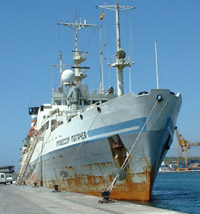
![]() View the recent
publications
View the recent
publications
More about GAS HYDRATES in:
![]() The
discovery of hydrates under seabed: a scientific, economic and
The
discovery of hydrates under seabed: a scientific, economic and
environmental revolution
![]() What
it is the "Inflammable Ice" or Gas Hydrates
What
it is the "Inflammable Ice" or Gas Hydrates
![]() A
" freezer
" in our sea floors
A
" freezer
" in our sea floors
![]() The
gas hydrates: guilty or it kills of global
heating of the Earth
The
gas hydrates: guilty or it kills of global
heating of the Earth
![]() The
bubbling
"SODA" effect for destabilization of the hydrates: a scientific hypothesis
for the mystery of The Triangle of the Bermuda
The
bubbling
"SODA" effect for destabilization of the hydrates: a scientific hypothesis
for the mystery of The Triangle of the Bermuda
![]() Tsunamis
caused by big submarine slides?
Tsunamis
caused by big submarine slides?
![]() Can
they grow deep
submarine reefs thanks to the hydrates?
Can
they grow deep
submarine reefs thanks to the hydrates?
![]() The
hydrates in net
The
hydrates in net
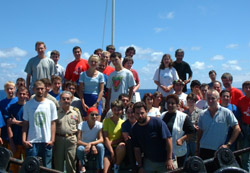 La
campaña TTR-10 promovida por la UNESCO como parte del programa de
formación de estudiantes de geología marina a traves de la
investigación oceanográfica aplicada (TTR Training Trough
Research) fue coordinada por el profesor Michael Ivanov de la Universidad
de Moscu y por el Dr. Luis Somoza, investigador marino del ITGE como parte
del proyecto TASYO enmarcado en el Programa Nacional de Ciencias y Tecnologias
Marinas
La
campaña TTR-10 promovida por la UNESCO como parte del programa de
formación de estudiantes de geología marina a traves de la
investigación oceanográfica aplicada (TTR Training Trough
Research) fue coordinada por el profesor Michael Ivanov de la Universidad
de Moscu y por el Dr. Luis Somoza, investigador marino del ITGE como parte
del proyecto TASYO enmarcado en el Programa Nacional de Ciencias y Tecnologias
Marinas
Muestra
de Gas Hidratado
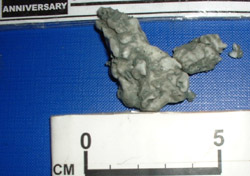 El
descubrimiento de depósitos de "hielo inflamable" o "gases hidratados"
en los fondos submarinos del Golfo de Cadiz, por parte de investigadores
de la Universidad de Moscú y de geología marina del Instituto
Tecnologico GeoMinero de España (ITGE) abre nuevas perspectivas
en la investigación de los recursos naturales de los fondos marinos
en nuestro país.
El
descubrimiento de depósitos de "hielo inflamable" o "gases hidratados"
en los fondos submarinos del Golfo de Cadiz, por parte de investigadores
de la Universidad de Moscú y de geología marina del Instituto
Tecnologico GeoMinero de España (ITGE) abre nuevas perspectivas
en la investigación de los recursos naturales de los fondos marinos
en nuestro país.
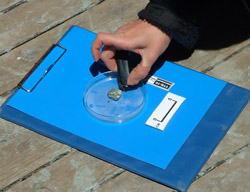
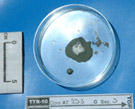
Los gases hidratados han suscitado un gran interes mundial dado que las primeras evaluaciones estiman que el volumen de gas contenido en los reservorios de hidratos puede significar , al menos, el doble de las reservas de gas explotadas actualmente en el mundo. Uno de los hechos mas significativos, es que el gas metano contenido en los "hidratos submarinos" es aproximadamente 3,000 veces el volumen de metano contenido en la atmosfera. Por esta razón, son considerados de importancia vital para el cambio clima´tico dado que repentinas y masivas fusiones de este "gas helado" puede provocar emisiones de grandes cantidades de metano a la atmosfera, lo que acelera el efecto invernadero, y a su vez el calentamiento global de la Tierra.
Investigación internacional de gases hidratados en el Golfo de Cádiz
Aunque en el Golfo de Cádiz ya se conocian la existencia de importantes yacimientos de gases en zonas poco profundas de la plataforma continental a menos de 100 metros de profundidad, actualmente en explotación por REPSOL-YPF, hacia zonas mas profundas no se tenia conocimiento del volumen de gas y de las estructuras relacionadas con dichas emisiones. Este gas se genera tanto por la descomposicion fria de materia organica reciente (denominado gas biogénico), como por un proceso de evolucion causado por el incremento de temperatura con el paulatino enterramiento de los sedimentos y su posterior migracion en el subsuelo (denominado gas termogénico). La existencia de grandes volumenes de gas en el subsuelo, migrando desde zonas muy enterradas hacia la superficie del fondo, favorece a su vez, la existencia de campos de hidratos de gas, si las condiciones de presion y temperatura son las adecuadas. Para la condiciones oceanograficas de las aguas del Golfo de Cadiz, el límite teórico a partir del cual se puede encontrar el gas en forma hidratado se calcula en torno a 800- 1000 metros de profundidad. A profundidades menores, el gas se encuentra en forma libre, pero posiblemente mezclado con salmueras densas (agua con mucho contenido en sales), por lo que, cuando sale hacia la superficie del fondo del mar, produce unos edificios similares a volcanes , que se denominan volcanes de fango, y donde se encuentran grandes cantidades de metano.
En el año 1999, estos objetivos en Golfo de Cadiz ha provocado el interes de otros organismos internacionales de investigación. Por una parte,el Naval Research Laboratory de los Estados Unidos ha realizado en 1999 una serie de prospecciones con sonar de barrido lateral de amplio rango con el objetivo de cartografiar los grandes edificios de emisiones submarinas, principalmente en la zona marroqui del Golfo del Cádiz, y en cooperación con organismos de Marruecos. Por otra parte, la Floating University de la Universidad de Moscú, a traves del programa TTR /Training Trough Research, financiado por la Comision Oceanográfica Internacional (COI) de la UNESCO, ha realizado una prospección en el Golfo de Cádiz, y cartografiando varios campos de edificios de emisiones de fluidos e hidrocarburos submarinos tanto en zonas marroquí como hispano-portugues, contando con el buque oceanografico "Professor Logachev".
En el año 2000, como parte del proyecto se va a realizar durante el mes de mayo, la campaña oceanográfica TASYO/2000 en aguas del Golfo de Cádiz, a bordo del buque oceanografico BIO "Hesperides" cuyo objetivo es la prospeccion del "Gas Helado" y de edificios submarinos ligados a emisiones de gas en el talud del margen continental hispano-portugues. Para ello se contara, con las modernos metodos en oceanografia geológica, como son las sondas multihaz y los metodos de sismica de reflexion multicanal.
Como complemento de esta campaña oceanográfica, en septiembre de este mismo año, se realizará otra a bordo del buque oceanográfico "Cornide de Saaveedra" del Instituto Español de Oceanografia, para la toma de muestras y análisis de sedimentos de los edificios provocados por emisones de gases en el Golfo de Cádiz.
Los gases hidratados en Internet
The oceanographic cruise TTR-10
promoted by the UNESCO like it leaves of the program of students' of marine
geology formation through the investigation applied in oceanography(TTR
Training Trough Research) it was coordinated for the professor Michael
Ivanov of the University of Moscow, Luis Pinheiro of the IGM (Geological
Survey of Portugal) and for the Dr. Luis Somoza, marine investigator
of the ITGE like part of the project TASYO framed in the spanish programme
of Sciences and Marine Technologies
The discovery of deposits
of inflammable ice or "gases hydrates" in the submarine floor of the Gulf
of Cadiz, on the part of investigators of the University of Moscow,
Instituto Geologico e Minheiro de Portugal (IGN) and of marine geology
of the Institute Geologico y Minero de España (IGME) and opens
new perspectives in the investigation of the natural resources of the marine
seabed in the bordering countries.
The gas hydrates are
a solid form of the gases, kind of an ice
inflammable, and that it
originates in the rich marine seabed in gas under conditions of high
pressure and low temperature. They are considered one of the energy reservations
bigger than the world located in the oceanic funds, and still without exploring.
This is the first time that are discovered hydrated gases, not alone in
the Gulf of Cádiz, but also in Iberian waters. On board the oceanographic
ship russian Professor Logachev and to a depth 900 meters, samples
of gases were picked up
gas hydrates, in form of
similar whitish rocks to the ice. With a particularity,
if they come closer a flame
their combustion it begins, since they are composed for
molecules of gas caught in
a net of ice. It has been observed that the gases
hydrates they are related
with big methane emissions to the marine bottom that that they cause eruptions
of mud volcanos, similar to eruptions of lava.
The gas hydrates have raised
a great world interest since the first ones
evaluations estimate that
the volume of contained gas in the reservoirs of hydrates
it can mean, at least, double
the reservations of gas exploded at the moment
in the world. One of the
facts but significant, it is that the gas contained methane
in the submarine hydrates
it is approximately 3,000 times the volume of
contained methane in the
atmosphere. For this reason, they are considered of importance vital for
the climatic change since sudden and massive dissociations of this
gas ice can cause emissions of big quantities from methane to the atmosphere,
what accelerates the greenhouse
effect, and in turn the global heating of the Earth.
International investigation
of gas hydrates in the Gulf of Cádiz
Although in the Gulf of Cádiz
they were already known the existence of important locations of gases in
not very deep areas of the continental platform to less than 100
meters deep, at the moment in exploitation for REPSOL-YPF, toward areas
but deep one didn't have
knowledge of the volume of gas and of the structures
related with this emissions.
This gas is generated so much by the decomposition
cold of recent organic matter
(denominated biogenic gas), like for a process
of evolution caused by the
increment of temperature with the gradual one
burial of the silts and their
later migration in the underground (denominated termogenic gas). The existence
of big volumes of gas in the one underground, migrating from areas very
buried toward the surface of the bottom, it favors in turn, the existence
of fields of hydrates of gas, if the conditions of pressure and temperature
are the appropriate ones. For the oceanographic conditions of those
waters of the Gulf of Cadiz,
the theoretical limit starting from which can be the gas
in moisturized form it is
calculated around 800 - 1000 meters deep. To smaller depths, the gas is
in free form, but possibly blended with dense brines (it dilutes with much
contained in salts), for that that, when it leaves toward the surface of
the bottom of the sea, it produces some similar buildings to volcanos that
are denominated mud volcanos, and where they are big quantities of methane.
In the year 1999, these objectives
in Gulf of Cadiz have caused the interest of others international
organisms of investigation. For a Naval Research Laboratory of the United
States has carried out in 1999 a series of prospectings with multibeam
echosounding of wide range with the objective of mapping those
big buildings of submarine
emissions, mainly in the Moroccan area of the one
Gulf of the Cádiz,
and in cooperation with organisms of Morocco. On the other hand, the Floating
University of the University of Moscow, through the program TTR /Training
Trough Research, financed by the Commission International Oceanográfica
(COI) of the UNESCO has carried out a prospecting in the Gulf
of Cádiz in several fields of buildings of emissions of fluids
and so much submarine hydrocarbons in Moroccan areas as Hispanic-Portuguese,
having the oceanographic ship "Professor Logachev."
In the year 2000, like part
of the project will be carried out during the month of May, the oceanographic
campaign TASYO/2000 in waters of the
Gulf of Cádiz, on board the ship BIO " Hesperides " whose
objective is the prospecting of the Icy Gas and
of bound submarine buildings
to emissions of gas in the slope of the margin
continental Hispanic-Portuguese.
This ship is endowed with those but modern methods in geologic oceanography,
like they are the multibeam echosounds and the methods of multifold seismic
reflection.
As complement of this campaign,
in September of 2000, will be carried out another on board the ship
Cornide of Saaveedra (ANASTASYA 2000) of
the one Spanish institute of Oceanography, for the taking of samples and
analysis of silts of the buildings caused by emissions of gases in the
Gulf of Cádiz.